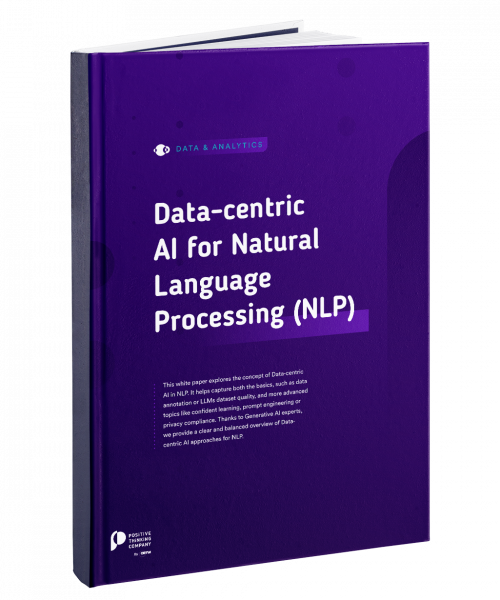Last week the second edition of a specialized event for insurance companies in Germany took place – due to the actual situation in a virtual format. “Customer management in insurance” is a conference that brings together interdisciplinary players from insurance and financial service companies to share their best practices.
The Positive Thinking Company, represented by Peter Neckel, our leader for Customer Analytics – had the great pleasure to host a presentation together with our client, Dr. Pascal Leuenberger, Leader Customer Data Analytics from St. Galler Kantonalbank (following SGKB). “Focusing on the hybrid customer: data science and customer strategy hand in hand” was the topic they presented to the participants of the conference. The take-away-message of the presentation: Less data science to achieve short-term cost advantages – more data science to realize long-term customer relationship management!
Data Science is experiencing tremendous public attention and many companies are of the opinion “This is what we have to do, this is the future”. So they are hiring data scientists, because they master the technology, and are instructing them to launch the first data science projects: “Do something useful with our data”. But often data scientists are not effectively embedded in the organization, silos arise and as a result, valuable findings resulting from data science are not applied because the recipients of the results, i.e. sales or marketing, do not understand how these insights were generated or – even worse – have no useful application for them – because they were not part of the project.
What are the consequences? The customer perspective is very often neglected in data science projects. The goals are short-term deals, true to the motto “make a sale!” instead of “create a customer!”. But since the average customer relationship duration is 11-13 years in banking, companies only focussing on the next purchase will not be able to maintain customer satisfaction in the long run.
In addition, digitization is still a topic that drives banks. The majority of banks have digitized their offerings, and bank customers can use almost all services digitally as well. And now there are even purely digital banks that have no branches and offer all their banking products only digitally.
As the title of the presentation suggests, @SGKB focuses on hybrid customers. The hybrid customer carries out many of his transactions digitally, for example, applying for a credit card. But there are other transactions where they want to be advised personally and on site, for example when applying for a mortgage. This is exactly what SGKB wants to use to its advantage and optimize the entire process – with the help of Data Science – so that the customers can always decide for himself how to complete their transactions, even if they have the idea of receiving personal advice in the middle of an application process.
Another important factor for SGKB is to reflect the entire customer relationship in its recommendation management system. Recommendations for e.g. banking products, that are generated on a personalized basis, are not only displayed to the customer in his online banking, but are also stored in the customer’s account at the same time, so that the customer advisor is always and at all times informed about what was recommended to the customer, to guarantee a smooth online-offline-experience for the client.
So this are the two important core messages from our joint project (and from our many years of experience with other customers & industries):
- The integration of digital services and personal offerings on site is the key: One face to the customer!
- Never do Data Science solely from the data perspective, but begin with the customer strategy and establish a link to the customer contact-related business processesas the basis for all efforts to use Data Science profitably in the long term.
We would like to take this opportunity to thank Dr. Pascal Leuenberger for allowing us to support SGKB in so many exciting analytics projects in the last couple of years. And of course, that we were able to present one of our joint projects in order to show one example of the added value that Data Science can produce – if you choose the right approach.










